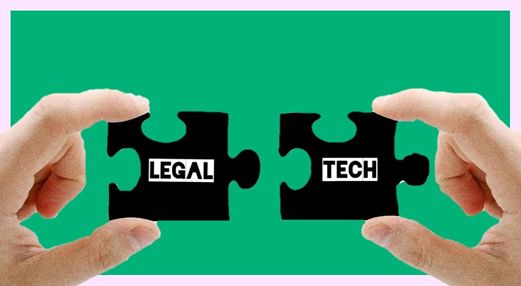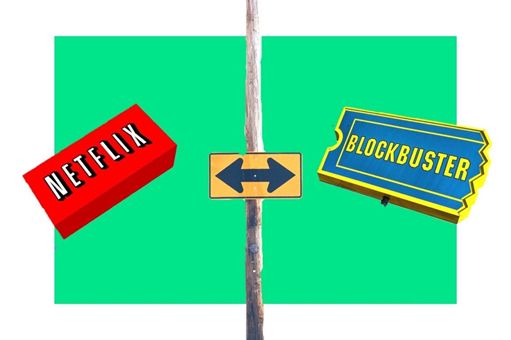When Rupert Murdoch’s now-defunct tabloid News of the World became entangled in the phone-hacking scandal of the decade, the trial was anything but ordinary.
First sparked in 2005 by reports a private investigator had eavesdropped on Prince William, the case sank into dark territory when NoW journalists were accused of hacking into and deleting the voicemails of a missing, and subsequently murdered, schoolgirl. Commentators at the time largely expressed the same view — unequivocal disdain at journalism gone wild. Tabloids had metamorphosed into quasi-intelligence agencies, shaking off moral constraints to chase a quick buck. Courts, unsurprisingly spurred on by the ensuing public outrage, set to work on untangling Murdoch’s scandalous web of wealth and influence to unveil the “sleazocracy” of Fleet Street.
The case had all the trappings of a 21st-century scandal: private investigators; conspiracy; murder; Downing Street.
But what made the trial most extraordinary was its magnitude. An army of 22 barristers and 40 solicitors spent months pouring over 60 witness statements and 42,000 pages of crown evidence. The result was a £60 million bill for all parties involved, making it the most expensive trial in Britain’s history.
The case plays on every cliche there is. It brings to mind images of exhausted lawyers clustered together in dark conference rooms eclipsed by towering piles of documents, desperately chugging mug after mug of black coffee for a thick paycheck.
But that was years ago. Now, thanks to advances in legal tech, humdrum tasks like document review can be done at a fraction of the cost in record time. This is a relief for some, and a threat for others. A minority of lawyers think the digitisation of the legal sector is a nascent threat; they’re worried a fleet of computers with the problem-solving finesse of Sherlock Holmes will rise up to snatch away their careers.
And then there are the lawyers who see legal tech as a tiresome gimmick. One law firm executive told The Law Society “very few” legal tech initiatives “are actually doing anything new.” So is legal tech just hype?
The Background: What is Legal Tech?

The history of legal tech is long-winded and tedious, so I’ll save you the misery. But before quarrelling over whether legal tech is hype or helpful, it’s useful to throw around a few definitions.
Let’s keep it short and sweet: legal technology is a puzzle made up of two pieces.
The first piece of the puzzle is aimed at lawyers and covers the use of technology to help make a lawyer’s job easier. This can range from something as simple as an e-signature software, all the way up to using blockchain technology to draft smart contracts.
The second piece is the underdog most lawyers forget. It covers the use of technology to help make a client’s life easier. Ways of doing this include making sure minorities can access legal services and wielding shut the ever-expanding justice gap. A fitting example — which embodies the perception of legal tech as a hypercompetent armour-plated Harvey Specter — is DoNotPay, a chatbot that offers AI-powered legal counsel. The free app aims to pull individuals who are priced out of legal services back into the market, promising users they can “sue anyone by pressing a button.”
This definition is by no means exhaustive, but it’s concise and captures legal tech’s double-pronged approach. So, armed with an adequate definition, we can go on to look at how useful the UK’s legal tech sector really is.
A Crash Course on the UK Legal Tech Sector
Stakeholders will always snap open their wallets and hurriedly fork out cash for a shiny new toy, and legal tech is no different. On a global scale, $926 million has been pumped into creating and developing law tech solutions. According to a study by The Law Society, the UK accounts for a significant part of this figure and is one of the starring actors shaping legal tech on the world stage. The study namechecks London in particular as the “engine” of the British tech industry.
And it’s not hard to see why.
London is the home of big-ticket city firms, who have spent the last few years jostling to place themselves at the forefront of legal tech adoption. In 2017, Allen & Overy launched Fuse, a legal incubator that allows hand-picked startups to develop and test tech-enabled solutions. One of the chosen startups is Avokka, a tool that provides end-to-end document automation to help draft and negotiate contracts. Clifford Chance, who offers a one-of-a-kind tech training contract, also uses a home-grown contract automation tool (CC Dr@ft) and launched a similar innovation hub in 2018. The convoy of other firms that have jumped on the tech hub bandwagon include Norton Rose Fulbright, Reed Smith and Freshfields.
If it seems like a lot, it’s because it is. In the words of Forbes: “Legal tech incubators are becoming the Starbucks of the legal industry — there’s one popping up on almost every corner.”
And legal tech startups have taken advantage of the buzz, gleefully knocking on the doors of investors to ask for millions in funding. Just last month Thoughtriver, a London-based startup that uses AI to screen contacts and highlight areas of risk, nabbed $10 million in investment. It’s a lot of money. But it doesn’t come close to the $50 million Kira Systems, a machine learning software that also analyses contracts, bagged from well-to-do investors in 2018. Cash is king, and it seems a thick green monarch has reigned supreme in legal tech-land in recent years.
It comes as no surprise, then, that the UK government wants a piece of the action. Last year, the government threw £2 million into the ring, appointing Tech Nation and the Lawtech Delivery Panel to drag the legal sector into the digital age. Projects in the pipeline include — surprise, surprise — an incubator (except it’s called a “sandbox”) to bounce around government-backed ideas, and an online training centre. This infectious tech-savvy spirit has even spread to courts. In 2014, someone from the Rolls Building, which is part of the Royal Courts of Justice, woke up and decided the days of manual paperwork were over. Just like that, filing cabinets were out; electronic filing solutions were in.
All This Legal Tech Must Be Useful. Right?
Not quite. Reading about the different ways legal tech is being adopted, and the different entities it’s being adopted by, is like parachuting into the eye of a hurricane. The same buzzwords mercilessly whiz past: Artificial intelligence! Innovation! Machine Learning! Automation! 5G! Incubation!
And yet, legal tech never really lives up to the fanfare that precedes it. Reading about contract automation and e-filing doesn’t ignite the same excitement as hearing about buzzy Silicon Valley startups that were founded in a suburban garage, or about entrepreneurs who started with nothing — like the janitor who invented Flaming Hot Cheetos. Although this is partly down to our habitual romanticisation of rags-to-riches stories, the relative colourlessness of legal tech has another culprit.
Some legal tech initiatives are all sizzle and no steak.
At a time when most industries were eagerly lining up to become Silicon Valley’s next sacrificial lambs, in the mid-2010s lawyers were notoriously sniffily about incorporating technology into their daily practice. Why buy software that could save time in a profession that bills clients by the hour? A journalist from the Financial Times once found himself in a room full of lawyers who compared themselves to plumbers: both professions provided services so essential they were supposedly immune from the tech revolution. This snobbery is characteristic of BigLaw’s origins. Law firms were traditionally seen as a tight-knit club, and the key to the door was rarely handed out. You had to be a lawyer to get in; you had to be a lawyer to own a firm; you had to be a lawyer to invest in firms.

Until the government kicked the door wide open. In 2007, the UK decided to liberalise the legal market, turning the traditional law firm model on its head. The UK Legal Services Act dragged law firms off their pedestals and declared a free-for-all: any licensed body could now launch an ‘alternative business structure’ to provide legal services. Essentially, non-lawyers were given a table inside the club. The Big 4 accounting firms were the first to enter this new world of legal liberalism, each launching their own legal networks that were kitted out with the one thing traditional law firms had neglected: tech.
The Big 4 were the perfect legal tech crusaders. They had deep pockets (in 2020 alone the Big 4 pledged to invest $9 billion in tech) and enough experience to understand how tech could be leveraged to enhance the delivery of services. And in a market that had shifted from lethargic to competitive overnight, standing out from the crowd was a must rather than an option.
What followed was a 100 mile-an-hour stampede. Traditional law firms had been rattled and, eager to keep up in the rat race to bag clients, began to rapidly incorporate tech solutions. In theory, this sounds great. Disruption and innovation often go hand in hand. And in an era where the legal industry was being berated for its archaic partnership models and billable hours, the change was welcomed with open arms.
But the rush to incorporate as much legal tech as possible, in the quickest time frame possible, has resulted in tech that’s, well, more artificial than it is intelligent. One law firm executive said he finds tech “startups hard to engage with” because they always “seem to be set up by a disgruntled lawyer who happened to go to uni with an IT guy.” Christina Blacklaws, president of the Law Society, admitted there are more than 500 law tech businesses, and not all of them are useful. A senior academic from Monash University agreed, pointing out “all too often, technology is seen as the answer when we don’t know what the question is.” The result is a whirlwind of hype, followed by a product that often falls flat.
An example is the once-promising Californian legal software startup, Atrium. Founded in 2017 by the same entrepreneur who launched live-streaming platform Twitch, Atrium’s vision was to make it easier for startups to collaborate with their legal teams. Its software included Records, a Google Drive-esque locker that allowed startups to keep track of the latest version of corporate documents, and Hiring, which automatically generated employment offer letters. Investor-land was smitten. When it was time to raise money, Atrium bagged $75.5 million in funding, including from Silicon Valley venture capitalist firm Andreessen Horowitz.
The plucky company that once pledged to revolutionise law quietly closed its doors in March of this year. It turned out building software for third-party law firms — who already had their own entrenched systems — wasn’t a magic bullet to success. Although some were sympathetic towards Atrium’s failure, others weren’t surprised it struggled to make a dent in the legal world. Mitch Kowalski, a Canadian lawyer, Atrium’s idea “half-baked” to begin with and asked whether Atrium had bothered to spend time properly researching already available technology. Similar commentators wagged their finger at Atrium’s millionaire founder for waltzing into the legal sector with no previous experience.
Regardless, the sad downfall of Silicon Valley’s golden child uncovered a clear warning sign: technology for the sake of technology can come across as gimmicky and underwhelming. Quality technology is more likely to evolve when we stop seeing legal tech as a sprint and start seeing it as a marathon.
Wow. What Else is Wrong with the Legal Tech Sector?
Let’s be clear: legal tech isn’t a hopeless dumpster fire.
It’s important to understand there are tech initiatives that do bring real value to law firms. Luminance, the brainchild of three PhD mathematicians from Cambridge University, is a popular AI and machine learning platform that reviews and analyses documents. It’s won the heart of countless firms, including Bird & Bird and Slaughter and May, and is currently in use in over 80 languages. Emily Foges, Luminance CEO, says the secret sauce to the startup’s success is its time-efficiency: it allows junior lawyers to leaf through way more documents per day than usual, leading to “less cannon fodder” and “less instances of burn out” overall. The startup’s rival, Kira Systems, is equally beloved amongst firms like Clifford Chance, Deloitte and Linklaters. On a scale of 1 to 4 (1 being low, 4 being high), users scored Kira Systems and Luminance 3.6 and 3.2 respectively. Neither company would’ve received these scores if they didn’t bring any value to the lawyers using them.
Valuable tech is being pumped into the litigation side of the biz, too. Everlaw, an e-discovery tool, recently landed $62 million in its Series C funding round in March. The company’s co-founder summarised the startup’s mission statement in an interview with Tech Crunch: “we help legal professionals sift through huge volumes of evidence in lawsuits and investigations to find the smoking gun and the incriminating email.” It sounds saucy, and lawyers love it. Words like “excellent”, “easy” and “painless” are sprinkled throughout Everlaw’s reviews.
But even though tech like this is useful, it stops short at revolutionising the legal services market. The reason? This type of tech doesn’t change the way in which legal services are delivered.
Last year, The Law Society released a report on the adoption of legal tech and came to the (unsurprising) conclusion the UK legal market is miles away from its Amazon moment. Lawyers’ unrelenting love affair with the billable hour was partly to blame, as was their infatuation with the partnership structure. Senior partners, especially those close to retirement, have little incentive to direct money from their partner profit pool towards technology that, somtimes, hasn’t had much success (I’m looking at you, Atrium). Attitudes also slipped into the equation, with IT departments in law firms being viewed as second fiddle to ‘core operations’.
Tucked away in the report, though, was another reason for legal tech’s sluggish behaviour. Most legal tech advancements are focused too much on lawyers, and not enough on clients.
There’s a lack of client centrality in the way we’ve been thinking about tech in law-land. Firms are currently adopting legal tech solutions that deliver operational efficiencies i.e. make their own lives easier. We referred before to these as the first puzzle piece in the legal tech definition. Things like document management (Kira and Luminance), e-discovery (Everlaw), legal research, timekeeping software, litigation support. Although adopting this kind of tech is necessary for firms to progress, it’s like doing back-office plumbing. Foundational, but not the be-all and end-all.
Slaughter and May admitted the (worthy) driving force behind adopting Luminance and similar tech was “improving the working lives of our lawyers.” And although this tech does bring benefits to clients – efficiency equals less zeros in their final invoice – these benefits are a by-product rather than the main aim and, let’s be honest, aren’t life-changing. Clients are still being offered the same legal service, just in a way that’s quicker. They’re not being given a genuinely different client experience or an improved user experience in any way. It’s like if Blockbuster responded to Netflix’s boom by driving down the price of each DVD. Sure, it’s always nice to pay less, but you still have to go through the same inconvenient client experience: driving to the store to rent it out.
It’s easy for players in the law field to pat themselves on the back thinking they’ve scored a goal with their new e-filing solution. And whilst it is a goal, it’s not the goal that will win the game i.e. revolutionise the legal industry. That goal will need to look at the bigger picture: clients.
A Pending Revolution: Legal Tech for Clients
This is where the second piece of the puzzle — technology that makes a client’s life easier — can shake up the status quo.
Jack Newton, co-founder of legal tech company Clio, recently released his debut book, The Client-Centered Law Firm: How to Succeed in an Experience-Driven World. In it he emphasises the huge gulf between what traditional law firms offer, and what clients actually want. 92% of firms think hiring a lawyer is a breeze, but 40% of clients say they find the experience mind-numbingly frustrating.
And Newton thinks Netflix, Airbnb and Uber are the reason why. These companies are the architects of today’s experience-driven world, raising the bar not only in their own industries but across every industry. We’re used to trivial daily tasks, like watching a movie or booking a holiday rental, being pain-free processes we can kickstart with the click of a button. Driving to the store to rent a DVD and standing in the rain to flag down a black cab are tales of history’s past. So it’s no surprise clients expect the same for life’s bigger tasks — like working with a lawyer. Yet firms spend only 5% of their revenue on technology for clients.
In his book, Newton says the solution is simple. Firms don’t have to pull out all the stops to dazzle clients with robo-lawyers. They just have to give them what they want in a better way.
And some innovators are beginning to catch on. Most people (including Kanye) find contracts excruciating to read, even when a lawyer is in the room to talk them through it. So Lieke Beleen, an industrial design engineer, founded Visual Contracts to make, well, visual contracts. The startup aims to empower clients by increasing the transparency of legal communication and levelling the playing field between clients and lawyers. The portfolio of legal documents Visual Contracts has drafted for clients, including Airbus, make a refreshing change from the dull block of Times New Roman text most contracts consist of.

A non-disclosure agreement Visual Contracts drafted for Airbus.
Richard Susskind, leading author, has called for a similar client-centric crusade to disrupt the court system. In his book, Online Courts and the Future of Justice, Susskind argues the bouncer to global justice can be assassinated by a pivot to online courts — the determination of cases by human judges but not in physical courtrooms. The book raises the interesting question of whether court is a place or a service, again highlighting the true benefactors of law are clients, not lawyers and judges. What’s truly surprising, though, is that online courts are still seen as radical in the digital society we live in. It goes to show just how far the legal sector has to travel before it experiences its own Uber-esque awakening.
Will Firms Be the Next Blockbuster or Netflix?

The legal sector is currently standing at the same junction Blockbuster and Kodak found themselves in a decade ago. Neither company was run by incompetent leaders whose inexperience smothered revenues. The irony, according to Forbes, is both failed because their leadership had built a “well-oiled” machine that worked so well it didn’t know how to process new information. So when snappy new competitors flocked on the horizon, they laughed them off with a dismissive wave. This wave was the death knell of their business.
Law firms, chambers and courts don’t have to go down the same path. It doesn’t take much to speed up the lethargic development of legal tech. All it takes is the realisation that tech has to be for clients, too.
About the author
Annia Mirza is a recent graduate from the University of Cambridge, founder of legal news company Legit and a future trainee solicitor. You can check out her LinkedIn here.
A final note
In this article, Annia has brilliantly argued against the ‘hype’ of legal technology. However, if you are involved in legal technology and want to argue why legal technology is revolutionising the legal services market, we’d love to present the other side of the argument. Feel free to drop us an email at [email protected] for further information.
